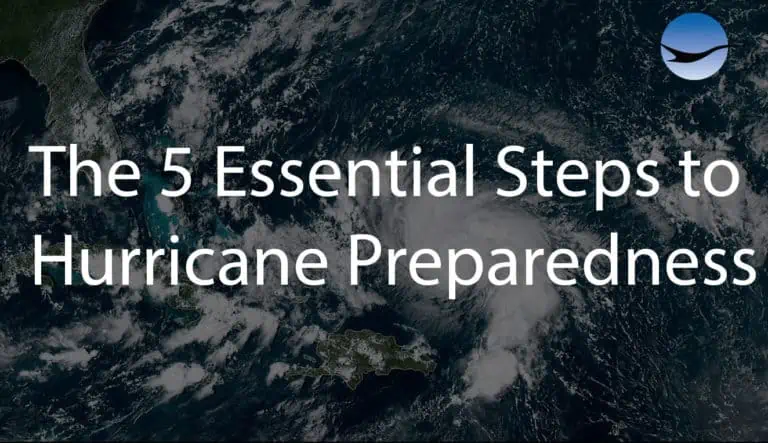The 5 Essential Steps to Hurricane Preparedness

As Floridians, we are always on high alert during hurricane season. Every time a tropical storm pops up in the Atlantic we become well aware of its possible impact. Now that Hurricane Dorian has formed we need to start making preparations to protect ourselves and our families. These 5 Steps will help you prepare for the impact and aftermath of Hurricane Dorian.
Step 1: Make a family plan.
Have a family meeting to talk about the hurricane. Decide where the family will stay during the storm. Together, develop a list of preparation tasks.
Step 2. Stock a disaster supply kit.
Your disaster supply kit should include the following items:
- At least one gallon of drinking water per person per day for five to seven days. – Can’t find water? A simple but effective solution is to fill 5 gallon buckets from Lowes or Home Depot, with lids, and filling them with water BEFORE the storm. Water systems can be compromised by lack of electricity or broken pipes from uprooted trees. Also, fill a bathtub so you have water to flush toilets in event water service is disrupted.
- Nonperishable food for three meals per day per person for five to seven days.
- A five- to seven-day supply of special items such as food, formula, diapers and wipes for infants and those with special needs.
- At least a two-week supply of medications.
- Toiletries and extra toilet paper.
- Manual can opener.
- Paper goods such as plates, cups, napkins and utensils.
- Unscented household bleach and medicine dropper.
- Extra bedding such as pillows, blankets and sleeping bags.
- Clothing, including rain gear and sturdy shoes.
- First aid kit, sunscreen and hand sanitizer.
- Mosquito repellent with DEET.
- Flashlight and extra batteries.
- Battery-operated radio.
- Tool kit including cord, rope, hammer, wood nails, saw, hatchet or axe, crowbar, chain saw blades, tarp, duct tape, rake, bucket, mop, broom and heavy work gloves.
- Plastic trash bags and ties.
- Fire extinguisher.
- Matches in a waterproof container.
- Extra charcoal or propane for outdoor cooking.
- Hazard alert radio.
- Extra batteries and car charger for cell phone.
- A canned tire inflator for punctured tires.
Your pet disaster kit should include food, water, bowls, leashes, toys, bedding, carrier, medications, newspaper, cat litter, plastic bags for handling waste, and license and vaccination documentation.
Step 3: Fill your gas tank and get cash.
Make sure your gas tank is full and you have extra cash on hand. ATMs may not be accessible or online, so cash is very important.
Step 4: Take steps to safeguard your home and property.
Store lawn furniture and other loose items inside. Double-check tie-down straps and anchors if you live in a mobile/manufactured home. Walk around your home and evaluate the roof, windows, garage doors, patio doors, screen enclosed rooms, landscaping, etc., to see what protective measures you need to take.
Step 5: Determine if you will evacuate, and if so, decide where you will go.
Residents should decide now where they will stay if an evacuation order is issued. Most people find it more comfortable to stay with friends or relatives who live well inland. For those who have no alternatives, public shelters may open depending on the track of the storm. If you are planning to seek public shelter, make sure to bring emergency supplies including special dietary items and supplies for infants and small children.



